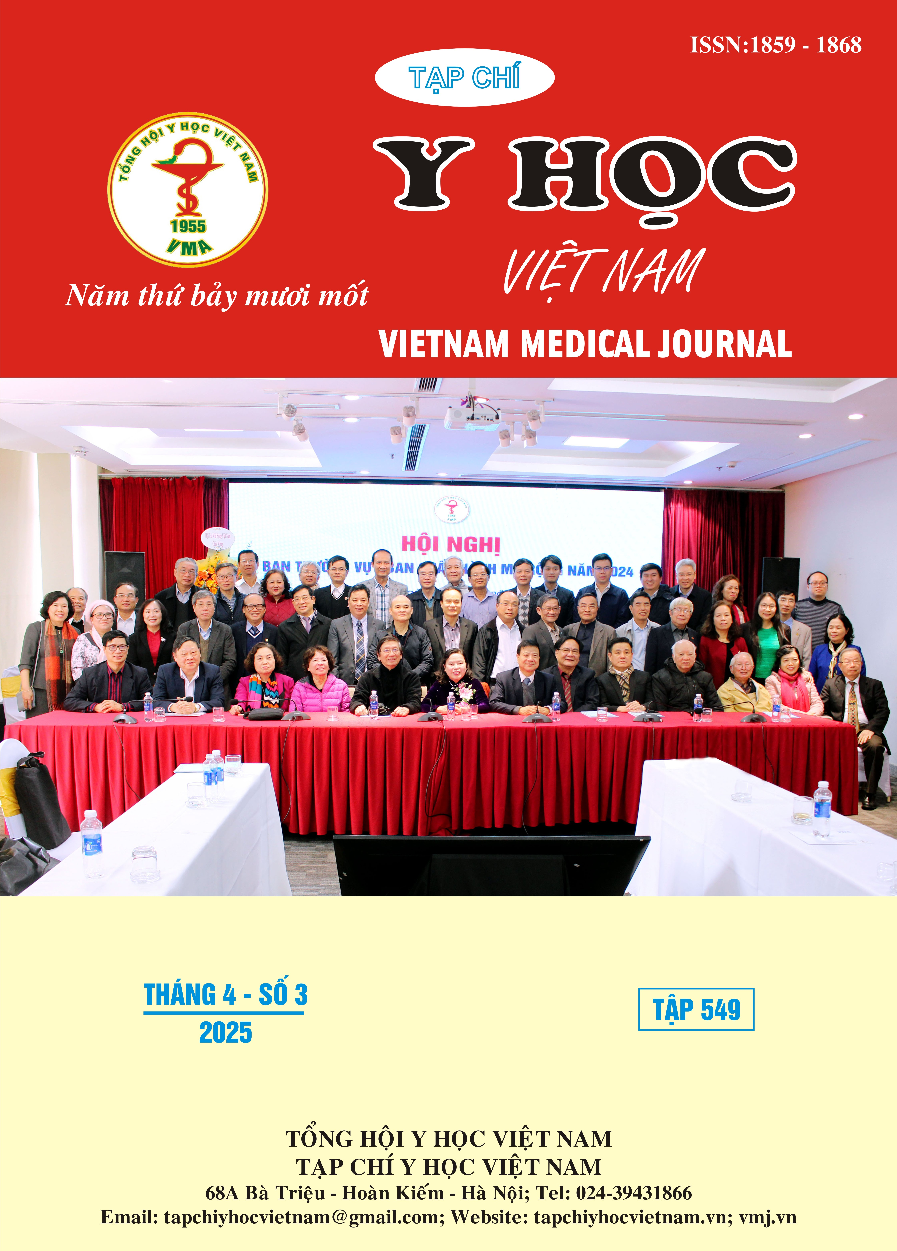PREDICTIVE VALUE OF LDL-C/HDL-C RATIO FOR OBSTRUCTIVE CORONARY ARTERY DISEASE IN PATIENTS WITH STABLE ANGINA
Main Article Content
Abstract
Objective: To determine the predictive value of the LDL-C/HDL-C ratio for obstructive coronary artery disease (OCAD) in patients with stable angina (SA). Methods: A cross-sectional study was conducted on 366 SA patients (mean age 64.8 ± 9.1 years, 62.6% male). Clinical, laboratory, and coronary computed tomography angiography (CCTA) data were collected. OCAD was defined as luminal stenosis ≥ 50% in at least one major epicardial coronary artery on CCTA. Results: Patients with OCAD had a higher prevalence of male sex, smoking, hypertension, dyslipidemia, and a family history of premature coronary artery disease. They were more likely to experience typical chest pain and less likely to have atypical chest pain or dyspnea. This group also had higher levels of creatinine, uric acid, total cholesterol, triglycerides, and the LDL-C/HDL-C ratio, while HDL-C levels were lower (all p < 0.05). The area under the ROC curve of the LDL-C/HDL-C ratio in predicting OCAD was 0.627 (95% CI: 0.568-0.686, p < 0.001), with a cutoff value of >2.25, a sensitivity of 45.9%, and a specificity of 79.2%. In multivariable logistic regression analysis, the LDL-C/HDL-C ratio was an independent predictor of OCAD (odds ratio 1.60, 95% CI: 1.13-1.27, p = 0.009). Conclusion: The LDL-C/HDL-C ratio is a valuable predictor of OCAD in SA patients, contributing to improved risk assessment and treatment decision-making.
Article Details
Keywords
obstructive coronary artery disease, LDL-C/HDL-C, stable angina
References
2. Sun T, Chen M, Shen H, et al. Predictive value of LDL/HDL ratio in coronary atherosclerotic heart disease. BMC Cardiovasc Disord. 2022;22(1):1-11. doi:10.1186/s12872-022-02706-6
3. Gao P, Wen X, Ou Q, Zhang J. Which one of LDL-C /HDL-C ratio and non-HDL-C can better predict the severity of coronary artery disease in STEMI patients. BMC Cardiovasc Disord. 2022;22(1):1-7. doi:10.1186/s12872-022-02760-0
4. Hu S, Fan H, Zhang S, et al. Association of LDL-C/HDL-C ratio with coronary heart disease: A meta-analysis. Indian Heart J. 2024;76(2):79-85. doi:10.1016/j.ihj.2024.01.014
5. Ko DT, Wijeysundera HC, Udell JA, et al. Traditional cardiovascular risk factors and the presence of obstructive coronary artery disease in men and women. Can J Cardiol. 2014;30(7):820-826. doi:10.1016/j.cjca.2014.04.032
6. Park J, Kim H-L, Kim M-A, et al. Traditional Cardiovascular Risk Factors and Obstructive Coronary Disease in Patients with Stable Chest Pain: Gender-specific Analysis. CardioMetabolic Syndr J. 2021;1(1):101. doi:10.51789/cmsj. 2021.1.e7
7. Cai G, Shi G, Xue S, Lu W. The atherogenic index of plasma is a strong and independent predictor for coronary artery disease in the Chinese Han population. Med (United States). 2017; 96(37): 1-6. doi:10.1097/MD. 0000000000008058
8. Wu TT, Gao Y, Zheng YY, Ma YT, Xie X. Atherogenic index of plasma (AIP): A novel predictive indicator for the coronary artery disease in postmenopausal women. Lipids Health Dis. 2018;17(1):1-7.doi:10.1186/s12944-018-0828-z


